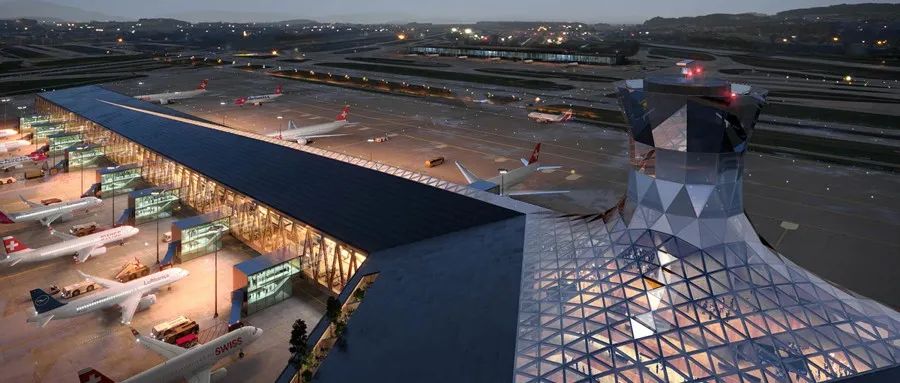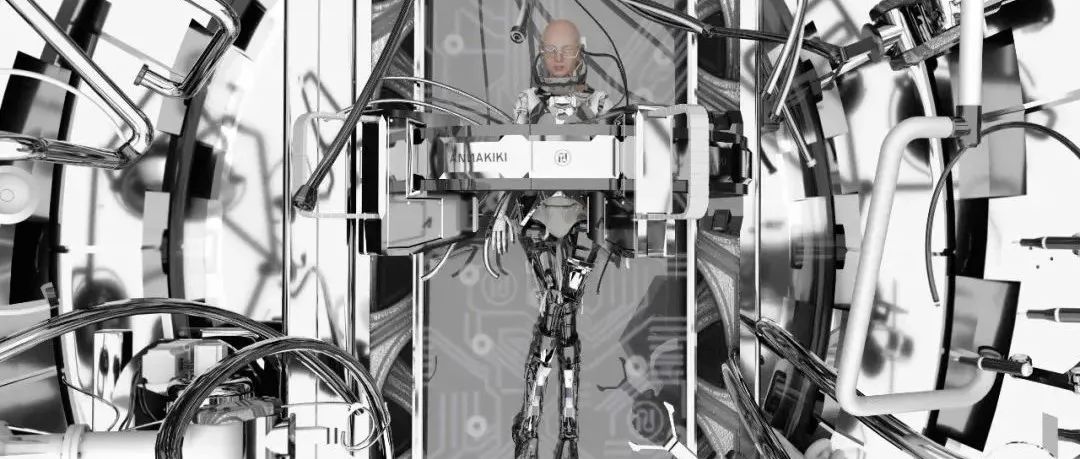由BIG、HOK、10:8 建筑事务所参与设计,Buro Happold为结构工程师、Pirmin Jung为木结构工程师以及NACO为航空顾问的联合体为苏黎世机场新航站楼和相邻建筑提供了设计方案,旨在加强机场作为瑞士门户的重要地位。从10个国际竞标方案中挑选出来的中标方案其主要亮点是由当地的实木材料构成的木结构。
自20世纪50年代投入使用以来,苏黎世机场已成为欧洲最重要的航空枢纽之一。继之前加建的E号航站楼、空侧中心和The Circle综合体,在2020年启动了一场两阶段国际设计竞赛,以取代老旧的A航站楼。参与竞标的团队包括福斯特、格雷姆肖建筑师事务所以及SOM等全球知名事务所。
新的A航站楼预计在10年内开放,将成为机场扩建的下一个里程碑。该航站楼包括申根和非申根登机口、空侧零售区、休息厅、办公室、新的机场控制塔和出入境大厅。
机场所有者兼运营商苏黎世机场集团董事会主席Andreas Schmid表示:“不管从可持续性、运营和经济角度,或是从城市规划和建筑角度来看,‘Raumfachwerk’设计方案是最具说服力的。”
“这个名字说明了一切:空间和结构得到了充分的整合,形成了一个功能性强、灵活的设计,”评委会主席Harry Gugger教授说道。“该项目的主干结构不仅是承重结构,而且定义和调整了空间,创造了独特的氛围,并赋予了与项目所在地和时代相符的独特身份。该项目不仅标志着苏黎世机场的一个新里程碑,而且还标志着整个航空业的一个新里程碑。评审团也非常高兴和感激能够有机会评审这样一个具有突破性意义的项目,它将帮助恢复大型基础设施项目中可持续木材的运用和建设。”
获胜方案名为 Raumfachwerk,一个坚固而灵活的结构框架,旨在关注乘客在机场的体验和动线。项目位于机场现有空侧中心和 1 号航站楼旁,主要分为两个区域:中央枢纽和离港大厅。中央枢纽包含购物区、机场服务区及垂直交通。离港大厅则包含登机口、等候区等空间。
“随着机场的发展和演变,以及国际准则和安全要求的变化,机场往往变得越来越复杂:一个由相互连接的元素、修补和加建等拼凑而成的集合体,”BIG创始人兼创意总监Bjarke Ingels表示。“对于苏黎世机场新的主航站楼,我们试图以最简单的方式来应对这一复杂的挑战:一个集结构设计、空间体验、建筑饰面和组织原则于一体的大型木质空间框架。引人注目的结构由当地采购的木材制成,屋顶的长雕塑体完全覆盖在能够将太阳光转化为电源的太阳能瓦片中。一个简单而富有表现力的设计,植根于传统,致力于创新,体现瑞士建筑的文化和自然元素。”
“凭借其优雅且可持续的木材设计,A 航站楼和Root将成为苏黎世机场和世界航空业的里程碑,”HOK设计负责人Peter Ruggiero表示。“我们与BIG和整个项目团队合作设计的新航站楼体现了机场对环境管理的承诺和对数百年当地建筑工艺和传统的尊重。它将为乘客提供非凡的体验,并增强机场商业中心的活力。”
为了增强乘客体验,新航站楼内的空间把日光作为自然导向标识系统。从离港大厅展开的屋顶形成的线性天窗向中央枢纽逐渐加宽通向中庭,所有出发、到达和转机的乘客在中庭汇合。将控制塔放置在空间的中心,可以让游客从内部感受到塔楼作为一个灯塔,给乘客一种身处城市广场而非机场的场所感。
抵达的乘客被引导到A航站楼的中央枢纽,七层空间通过宽敞、光线充足的中庭相连接。中庭通过楼梯、自动扶梯和电梯将所有楼层连接起来,乘客能够从地下出入境大厅到达出发、到达和顶层的休息厅。
A航站楼的结构、地板和天花都将木材作为主要材料。作为一种可再生的当地资源,选择木材为主材料表达了对瑞士当地悠久的木结构建筑传统的致敬,同时允许在施工过程中能够进行高效预制。该建筑的主要承重结构基于V形木柱,该木柱借鉴了标志性的阿尔卑斯山景观以及瑞士数百年来的木结构和坡屋顶传统。这座独具特色的当地建筑将吸引乘客,它不但展示了高品质的工艺,同时还强调了机场对可持续发展的承诺。
A航站楼的屋顶由光伏板和能量桩覆盖,有助于当地的能源生产和储存。集成式遮阳将减少太阳能热增益和维护要求。水和空气的冷却加热系统的组合也将减少建筑的能耗。
“尽管现有结构的框架条件复杂,但A航站楼的设计旨在提供最直观的路线,使旅客能够高效便捷地到达登机口和最终目的地,”BIG负责合伙人Martin Voelkle表示。“同样,视觉上简约的材质、自然光和亲生物设计有助于重新定义乘客对典型机场体验的期望。”
业主:苏黎世机场集团
团队:BIG (设计主持), HOK (航空建筑师), 10:8 (当地建筑事务所), Buro Happold (结构工程师), Pirmin Jung Schweiz AG (木结构/建筑物理工程师), NACO (航空顾问), Haerter & Partner AG (机械工程师), TLP (电气工程师), B+P Baurealisation (施工管理/建筑模型管理/估算), BIQS (消防顾问), Pragma (商业策略), The Design Solution (商业顾问), Bucharest Studio & IMIGO (视觉设计)
BIG+HOK Team Wins Global Zurich Airport Competition with Timber Design
Selected from among 10 global competition entries, the winning proposal for the largest dock of the internationally acclaimed Zurich Airport is composed predominantly of solid regional wood.
The new Dock A and adjacent buildings designed by BIG, HOK, 10:8 architects, engineer Buro Happold, timber experts Pirmin Jung and aviation consultant NACO seek to strengthen the airport’s continued status as the gateway of Switzerland.
Since its opening in the 1950s, Zurich Airport has become one of Europe’s most important aviation hubs. Following the airport’s previous additions of Dock E, the Airside Center and the Circle, an international two-stage design competition was kicked off in 2020 to replace the aging Dock A. The competition included proposals from Foster + Partners, Grimshaw Architects and SOM.
Expected to open in 10 years, the new Dock A—which includes Schengen and Non-Schengen gates, airside retail, lounges, offices, the new air traffic control tower and an extension of the immigration hall—will be the next milestone in the airport’s expansion.
“The ‘Raumfachwerk’ proposal was the most convincing from a sustainable, operational and economic point of view, but also from an urban planning and architectural point of view,” said Andreas Schmid, chairman of the board of directors of airport owner and operator Flughafen Zürich AG.
“The name says it all: Space and structure get fully integrated and result in a highly functional and flexible design,” said Prof. Harry Gugger, chairman of the jury. “The backbone of the project is formed by a structure that is not just load bearing, but defines and adapts the space, creates a unique atmosphere and provides a distinctive identity true to its place and era. This project marks not only a new milestone for Zurich Airport, but for the entire aviation industry. The jury was delighted and grateful to endorse such a groundbreaking project that will help to revive sustainable wood construction for great infrastructure projects.”
Based on the team’s concept of the ‘Raumfachwerk’—a robust yet flexible structural framework—the design proposal celebrates the passenger experience and movement through the airport. Located adjacent to the existing Airside Center and Terminal 1, the new Dock A is defined by two main areas: a central hub and a pier. The central hub features shopping, airport services for arriving and departing passengers, and vertical circulation. The pier includes gates, waiting areas and fixed links connecting to the planes.
“As airports grow and evolve and as international guidelines and safety requirements change, airports tend to become more and more complex: Frankensteins of interconnected elements, patches and extensions,” said Bjarke Ingels, BIG founder and creative director. “For the new main terminal of Zurich Airport, we have attempted to answer this complex challenge with the simplest possible response: A mass timber space frame that is structural design, spatial experience, architectural finish and organizational principle in one. The striking structure is made from locally sourced timber, and the long sculptural body of the roof is entirely clad in solar shingles turning sunlight into a power source. A simple yet expressive design—rooted in tradition and committed to innovation—embodying the cultural and natural elements of Swiss architecture.”
“With its elegant and sustainable timber design, the new Dock A and Root will be a landmark for both the Zurich Airport and the world’s aviation sector,” said Peter Ruggiero, design principal with HOK. “We have collaborated with BIG and the entire team to design an addition to the terminal that illustrates the airport’s commitment to environmental stewardship and that respects centuries of local building craft and tradition. It will provide an exceptional experience for passengers as well as enhance the airport’s vibrant commercial center.”
To enhance the passenger experience, the spaces within the new terminal use daylight as a natural wayfinding system. A linear skylight created by the unfolding roof of the pier widens toward the central hub and opens into the atrium, where all departing, arriving and transferring passengers meet. Placing the control tower here, in the center of the space, enables travelers to experience the tower from the inside as a beacon that creates a sense of place—more akin to a town square than an airport.
Arriving passengers are guided toward the hub of Dock A, which includes seven floors visually connected through the generous, light-filled atrium. Passengers flow through the atrium, which connects all floors via stairs, escalators and elevators, from the underground immigration hall to all arrival and departure levels as well as lounges on the top floors.
The contemporary, pared-back material palette envisions timber as the primary material for Dock A’s structure, floors and ceilings. As a renewable local resource, timber pays homage to the long-standing local tradition of wood construction in Switzerland while allowing for efficient prefabrication during the construction process. The building’s main load-bearing structure is based on V-shaped timber columns that reference iconic Swiss Alpine landscapes and the centuries-old tradition of timber construction and pitched roofs. Passengers will be welcomed by this distinctly local architecture, which showcases high-quality craftsmanship while underscoring the airport’s commitment to sustainability.
Photovoltaic panels and energy piles will cover Dock A’s roofs, contributing to local energy generation and storage. Integrated shading will reduce solar heat gain and maintenance requirements. A combination of water and air-based cooling and heating systems will decrease the building’s energy consumption.
“Despite the complex framework conditions of the existing structure, the design of the new Dock A aims to provide the most intuitive routing possible to bring travelers to their airport gates—and thus their final destinations—with efficiency and ease,” said Martin Voelkle, partner-in-charge at BIG. “Similarly, the visually calm material palette, natural light and biophilia help redefine passenger expectations of the typical airport experience.”
Client: Flughafen Zürich AG
Team: BIG (design lead), HOK (aviation architect), 10:8 (local architect), Buro Happold (structural engineer), Pirmin Jung Schweiz AG (structural engineer timber/building physics), NACO (aviation consultant), Haerter & Partner AG (mechanical engineer), TLP (electrical engineer), B+P Baurealisation (construction management/BIM management/cost), BIQS (fire protection), Pragma (retail strategy), The Design Solution (retail consultant), Bucharest Studio & IMIGO (visuals)
相关阅读 Project Story ++
本文来自微信公众号“HOK贺克”(ID:hok_ap)。大作社经授权转载,该文观点仅代表作者本人,大作社平台仅提供信息存储空间服务。












